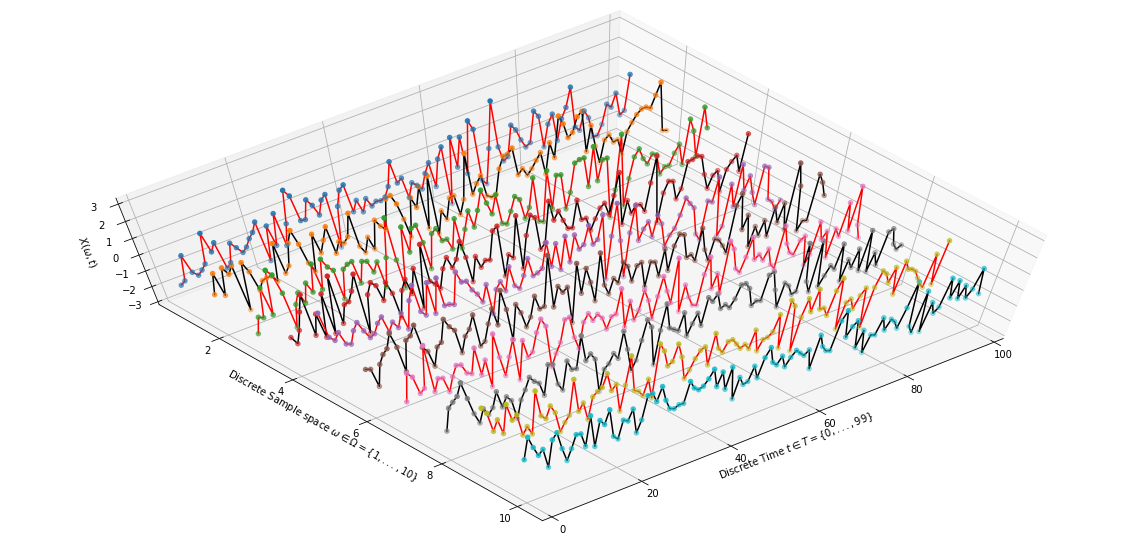IE611 - Introduction to Stochastic Models

Instructor
M. K. Hanawal
Section
Only one section- this is a core course for IEOR M. Tech and PhD students, there were about 15 UGs in a class of 73.
Semester
Autumn ‘19
Course Difficulty
Moderate
Time Commitment Required
- Credits - 8
- Lectures - 3 hours per week
- Tutorials - 1 hour per week
- Self-study - 2-3 hours per week
Grading
Relative grading. Grading was quite harsh: 3 AAs and 9 ABs among 73. Modal grade was BC (25 awarded) followed by BB (16 awarded).
Attendance Policy
The professor is initially strict about attendance and repeatedly warns that he will give a grade penalty if a student doesn’t have at least 80% attendance. However, he did not implement the scheme.
Pre-requisites
While there are no official prerequisites, the professor expects that you have a basic background in probability and stochastic calculus. IE 502/EE 221/equivalent is considered as an unofficial prerequisite. As a sophomore, I was dissuaded from taking the course multiple times by the professor, but if you insist, he lets you continue. The prof actually ended up repeating the entire probability basics for the first month, so there was no difficulty in understanding. Although, the content does get pretty involved post-midsem.
Evaluation Scheme and Weightages
- Five quizzes (best of four considered, no re-quiz): 40 points
- Midsem: 25 points
- Endsem: 35 points Midsem and endsem were open notes.
Topics Covered in the Course
PRE-MIDSEM Kolmogorov axioms, random variables, joint and marginal laws, conditional expectation, (QUIZ 1), stochastic processes, notion of sample paths, finite dimensional distribution functions, Kolmogorov’s consistency theorem, (QUIZ 2), time averages and laws of large numbers.
POST-MIDSEM Discrete time countable state Markov chains, hitting times, first step analysis, stopping times and strong Markov property, recurrence and transience, communicating classes, (QUIZ 3), ergodic theorem, periodic chains, coupling lemma, (QUIZ 4), discrete-time renewal theory, elementary renewal and renewal reward theorems, regenerative processes, (QUIZ 5), Poisson processes, birth-death processes, uniformization and time reversed chains.
Mechanism of Instruction and Teaching Style
The instructor used to write content on the blackboard and students would copy. The lectures were being recorded, so the instructor used to entertain minimal doubts. On the positive side, videos would be uploaded within a week of the lecture, so it was easy to cover up on missed lectures. The instructor teaches word-to-word from the reference book he mentions at the start, so it may be a good idea to go through the books well.
Assignments and projects in the Course
Weekly tutorial questions were from the exercises of the reference books. Attendance was not compulsory and the instructor posted tutorial solutions before the midsem and the endsem. No assignments or projects.
Exams
Quiz questions were straight from the solved examples in the textbook or from the tutorials, so it was easy to get a good score on the quizzes. Midsem and endsem were much, much tougher, however, the class average is pretty low. (Highest overall was 75/100 and very few people had over 60)
Reference Material
- S. M. Ross, Stochastic processes, 2nd Edition, 1996, John Wiley, New York.
- Probability with Engineering Applications. ECE 313 Course Notes. Bruce Hajek.
- Discrete Event Stochastic Processes: Lecture Notes for an Engineering Curriculum: Anurag Kumar.
Importance of Course
IE 611 is a prerequisite for many courses involving random processes and probability, to name some, IE 612 and IE 618.
Other interesting links
CDEEP videos for the same course are available.
Motivation to take the course
An advanced course on probability and random processes is helpful for anyone with a keen interest in machine learning, finance or statistics. The examples used throughout the course model real-life situations such as queues, stochastic games, rewards and reinforcement. So it makes the course a must-do for someone interested in the above fields.
Review by: Aditya Iyengar